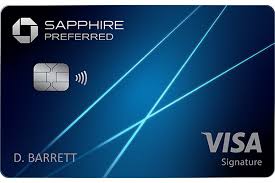This site is part of an affiliate sales network and may earn compensation when a customer clicks on a link, when an application is approved, or when an account is opened. This relationship may impact how and where links appear on this site. This site does not include all financial companies or all available financial offers. Zachary Abel is also a Senior Advisor to Bilt Rewards. Terms apply to American Express benefits and offers. Enrollment may be required for select American Express benefits and offers. Visit americanexpress.com to learn more Opinions, reviews, analyses & recommendations are the author’s alone, and have not been reviewed, endorsed or approved by any of these entities.
“Never let a good crisis go to waste”
While the banks may be facing loan loss, they’ve received enormous guarantees from the Fed, and let’s be honest…they won’t be allowed to collapse. On the other hand, airlines and hotels, while being given bailout money, swaps, and loans… aren’t too big to fail. In fact, I’d be surprised if we didn’t see at least one US based airlines seek chapter 11 protection before the year runs out. This presents an asymmetry that really favors the bank, and is one, I’d seek to leverage if I were running a bank’s loyalty program/credit card division. The banks are not only faced with the opportunity to buy up points on clearance, they have the potential to expand their transfer partner lists to substantiate and bolster their own currency, and leverage the entire thing on the value of the teetering airline and hotel underlying loyalty programs.
From Friends to Frenemies
For a long time the only points to be negotiated were airline and hotel…then came the Membership Rewards, Ultimate Rewards, Thank You, etc.
There is a great “frenemy” relationship between banks and transfer partners. Banks are literally fueling the most profitable segments of airlines and hotels by purchasing billions of dollars worth of points. By en large, airlines lose money on operations and earn profit off loyalty. Case in point: we just saw Amex agree to $1B worth of Hilton Honors, and United + Delta have been in talks to finance ongoing operations with discounted point sales to Chase and Amex. I believe AA’s final quarter of 2019 was the first in years where they actually didn’t lose money off of flying planes.
On one hand, Banks love this relationship because they can entice consumers into their credit cards with the lure of wonderful trips and piles of points in loyalists’ favorite programs. They charge fees and interest and make money hand over fist. However…on the other hand, the airlines and hotels themselves can devalue those points, and often do, to the detriment of the banks who agreed to purchase the the points. It’s certainly not in the best interest of the bank to agree to buy a currency that they have no control over its future value, and when that value decreases, the consumer spends less on the card, and thus lowers the bank’s profit.
The banks response to this erosion has been to mimic what Amex has done for a long time. Build, curate, and operate their own currency. Establish, build, and develop a suite of cards that include transfer partners, travel benefits + credits, and lure in consumers with a multitude of redemption options and multiple point earn rates. Clearly, this erodes the value and expenses put on co-branded credit cards and thus the Loyalty programs, who used to be the only way to earn hotel/airline points, decry the evolution and expansion of bank centric point currencies that pull spend away from their co-branded cards.
Banks hate that loyalty programs can devalue their pre-negotiated currencies, and loyalty programs hate that banks are stripping away purchases made on the credit cards that provide much of their bottom line. But they both make so much damn money off each other they just grin and bear it.
The balances have shifted
For the past decade, travel has expanded in an unbelievable way, and as airlines and hotels eroded not only the customer experience + decimated their most profitable business segment, loyalty, they didn’t properly anticipate how to engage a recession. Money’s been cheap, and the Fed driven economy was great. We even heard certain airline CEOs declare that they’d never lose money again.
Cut to: Market collapse, hotels empty, and airlines flying 10% of their YoY flights.
If I were running a bank’s credit card division I would be leveraging this opportunity with everything I had. Suddenly, the very existence of a brand…not its loyalty program….is facing existential crisis. If United, or American, or Hilton were to collapse and face bankruptcy, those uber valuable point programs would be spun off, a la Aeroplan and Air Canada. And who do you think would be first in line to acquire it? If you’re a bank with a multi-year deal to finance said loyalty program with in place marketing and revenue streams …it’s you. Much like a long term leaseholder having first dibs to a property whose owner goes into bankruptcy, you’re going to get a good look at that property when it comes to auction. And, who better to take control of a loyalty program than the bank itself. They already have a built in point programs. United is in bankruptcy? Maybe Chase will buy it, spin it off, and offer current United Mileage Plus loyalists the ability to Convert 1:1 to Ultimate Rewards. I’m not prognosticating this, but merely using it as an example to underline the leverage a bank could have over a brand.
Banks should be looking at distressed loyalty programs domestically, and around the world that have intrinsic value to fold into their transfer partners
The hotel and airline businesses built around loyalty profit are in desperate need to finance continued operations. This isn’t unique to the US, and many of the international brands are co-branded. The leviathans of transferrable points should lean into this crises and strike relationships with more of the world’s most valuable brands.
Chase had once been partnered with Korean Airlines and Amtrak. Both could use some liquidity I’m sure. How about incredibly valuable programs like Asiana and Japan Airlines. These partnerships have long been established with Marriott, i.e. Starwood, and would be extremely valuable additions to American Express, Chase, Citi, or Cap1.
Many of these programs are attached to airlines that are unstable and face a long runway of austerity. I would think this would open up the possibility of providing liquidity via point sales dependent on the viability of the loyalty program. Essentially a collateralized point swap. If the airline goes belly up, the bank could take chunks, or controlling interest of the loyalty program itself.
Banks are facing increasing loan loss, and I’d guess a surge in customers looking to close premium cards and save on annual fees. Adding attractive transfer partners would not only provide much needed liquidity for said programs, but also a ton of value to cardholders who value the bank’s currency, I.e. Membership Rewards, Ultimate Rewards, Thank You, etc.
Will this happen
Probably not. But, the greater the landscape of transfer partners a bank advertises, the more valuable and hedged their own point program becomes. Personally, I believe that the banks have been given the unique opportunity to add cardholder value, create rosy optics by through liquidity to ailing programs, and negotiate favorable deals that could result in them cheaply acquiring valuable assets should the brands the loyalty programs are hinged upon fail.
But, then again…I’m just a dude who travels with a stuffed monkey.
Opinions, reviews, analyses & recommendations are the author’s alone, and have not been reviewed, endorsed or approved by any of these entities.



The responses below are not provided or commissioned by the bank advertiser. Responses have not been reviewed, approved, or otherwise endorsed by the bank advertiser. It is not the bank advertiser's responsibility to ensure all posts and/or questions are answered.